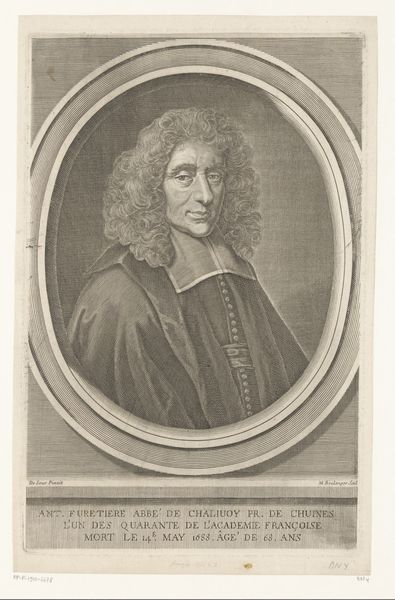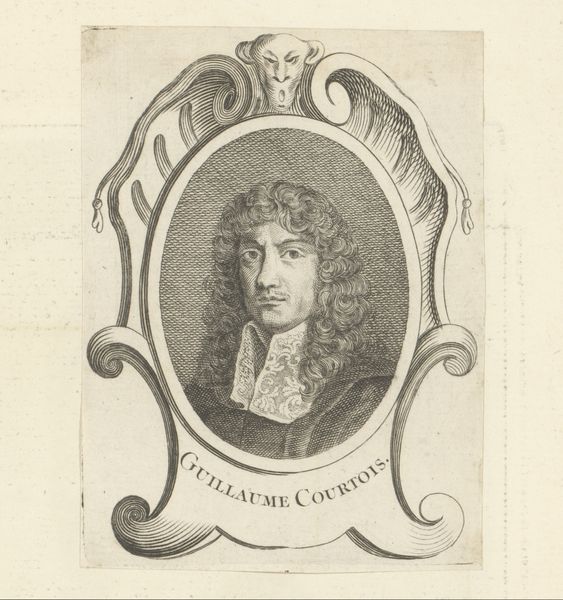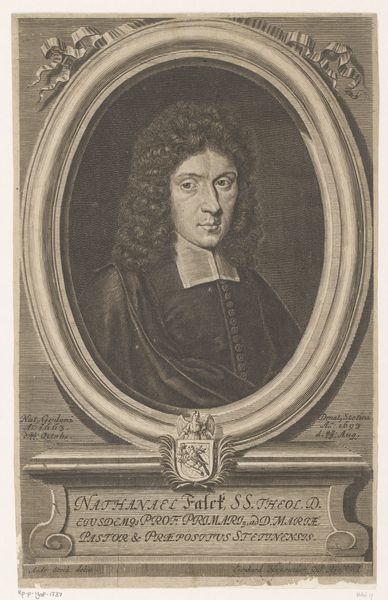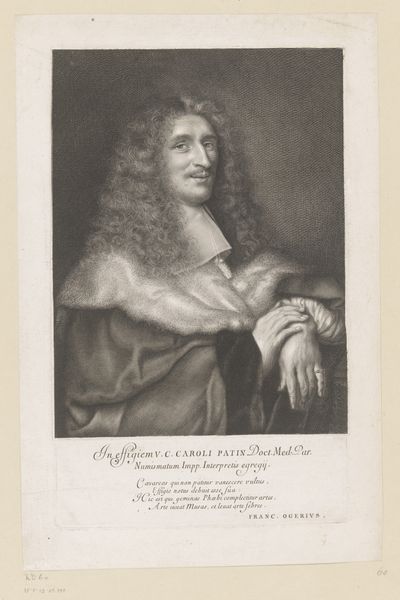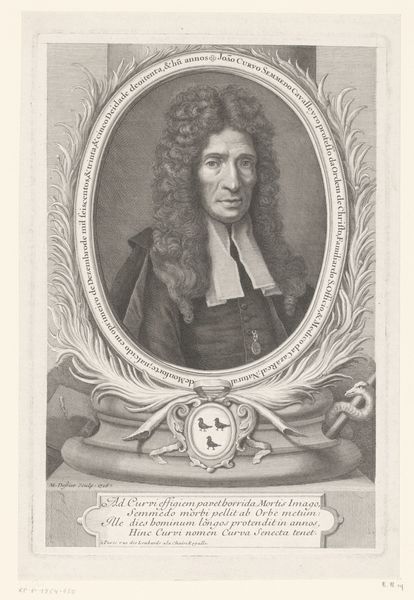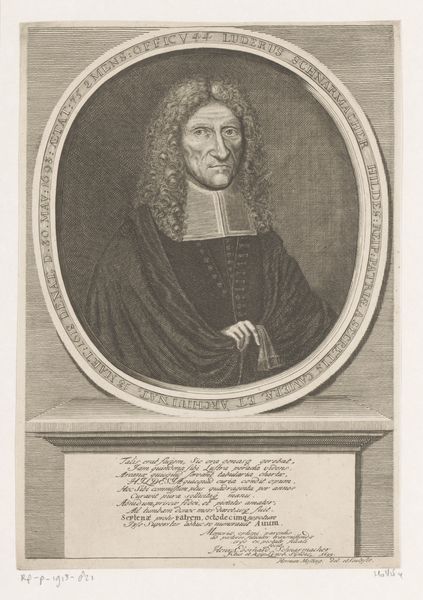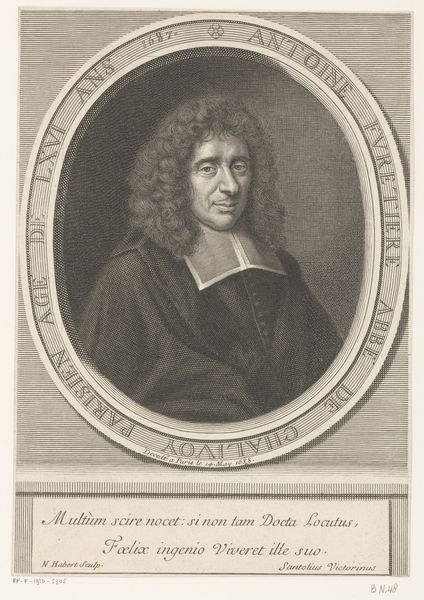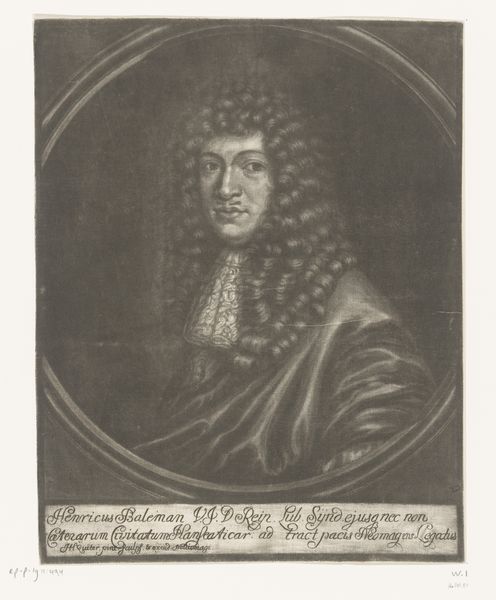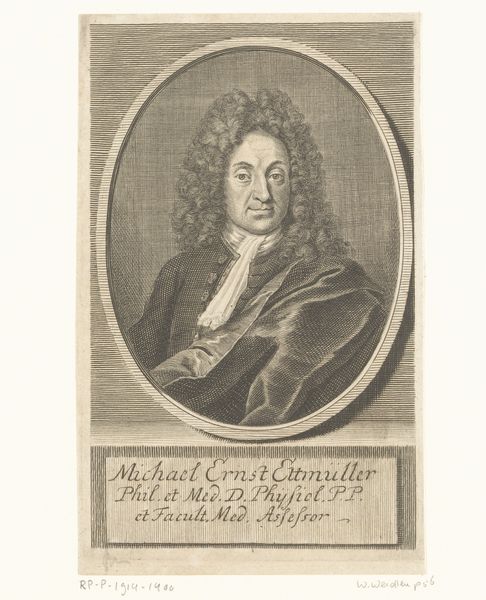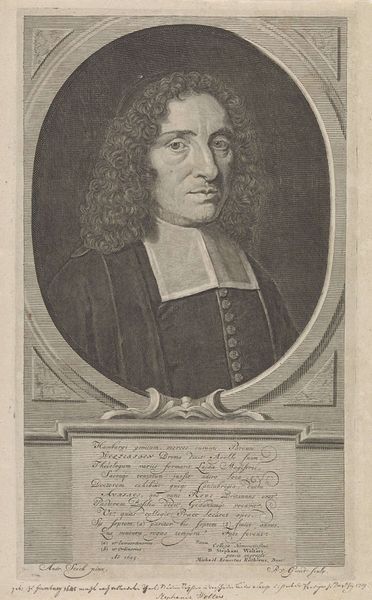
print, engraving
#
baroque
#
dutch-golden-age
# print
#
old engraving style
#
line
#
engraving
Dimensions: height 129 mm, width 72 mm
Copyright: Rijks Museum: Open Domain
Curator: This is "Portret van Charles Patin," an engraving made by Jean Boulanger sometime between 1653 and 1680, currently held in the Rijksmuseum. What catches your eye about this particular print? Editor: I'm immediately drawn to the detail achieved through the engraving process. It feels so different than a painting – so precise, but also… colder? What does the fact that this is a print, rather than a painting, tell us about the artwork's intended audience or its purpose? Curator: Precisely! The choice of engraving is crucial. Consider the mechanics: engraving allows for multiple impressions, it's about reproduction. This speaks to a different mode of consumption than a unique painted portrait intended for private display. The material process hints at wider distribution and potentially a different socio-economic class engaging with the image. What might the relative affordability of prints mean for how portraiture functioned in society? Editor: I hadn't thought of the economics of it. So, a print like this could be disseminated more widely, potentially influencing the perception or image of Charles Patin himself? Would that have impacted Boulanger’s craft too, in contrast with a painter focused on the uniqueness of their work? Curator: Absolutely. The means of production influences the artwork’s social role and artistic style. The lines in an engraving like this allow the artist to produce minute detail and achieve wide circulation for profit. Compare it to the guilds of the time and the print becomes an interesting item, more available than other unique fine arts for a broader public. How does considering the labor involved in engraving shape your understanding of "art" in this period? Editor: Wow, that’s given me a lot to think about. Focusing on the *making* really opens up how to view the image. Curator: Indeed. By thinking about material and the making, it can help us think about social position of maker and viewer, and even the subject of the portrait. The processes behind its creation, it's all crucial in our interpretation.
Comments
No comments
Be the first to comment and join the conversation on the ultimate creative platform.
